The scholar Jean Devise has traced the earliest uses of a Moor or a Black figure in heraldry to Bavaria, the upper Rhineland, and Lower Saxony in the late thirteenth and early fourteenth centuries. The use in family and institutional crests at this time most likely reflected the spread of the imagery of the Hohenstaufen emperors, as in St. Maurice and the Black Magus, in which Black figures stood in for the universalist pretensions of the Church and the Empire.
From the early fifteenth century, in the context of increasing conflict against Muslims and expanding maritime exploration and global trade, including in African slaves, Black figures began to take on more fantastical, exotic, and degrading features. In this period Black figures became a more common heraldic feature across the German lands.
Since the late fourteenth century St. Maurice, the patron saint of Coburg, has served as a symbol of the city. He has featured in the city’s crest in the form of a “Moor’s head,” and statues of him can be found throughout the city. Around the seventeenth century there was a significant shift in depictions of the saint, as he morphed from an armored knight to a noble savage. Elements of the latter continue to feature in the city crest, which has otherwise remained consistent over the centuries.
Jeff Bowersox
Deutsch
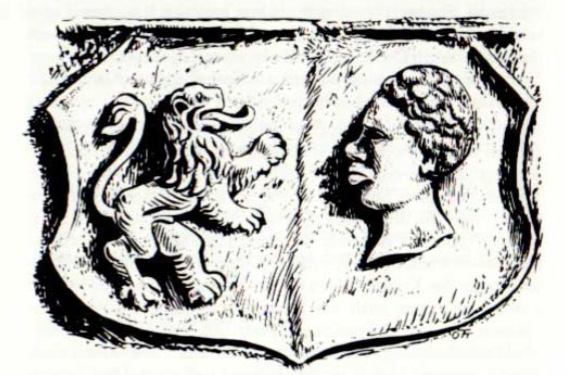
From at least 1380 St. Maurice began to feature on city coins and later on versions of the city crest. By the seventeenth century, he was the chief symbol of the city. Herbert Ott, “Coburg Stadtwappen (ca. 1600),” in Rudolf Brückner, Coburg Stadtwappen (Coburg: Fremdenverkehrs- und Kongreßbetrieb, n.d.). ©Herbert Ott.
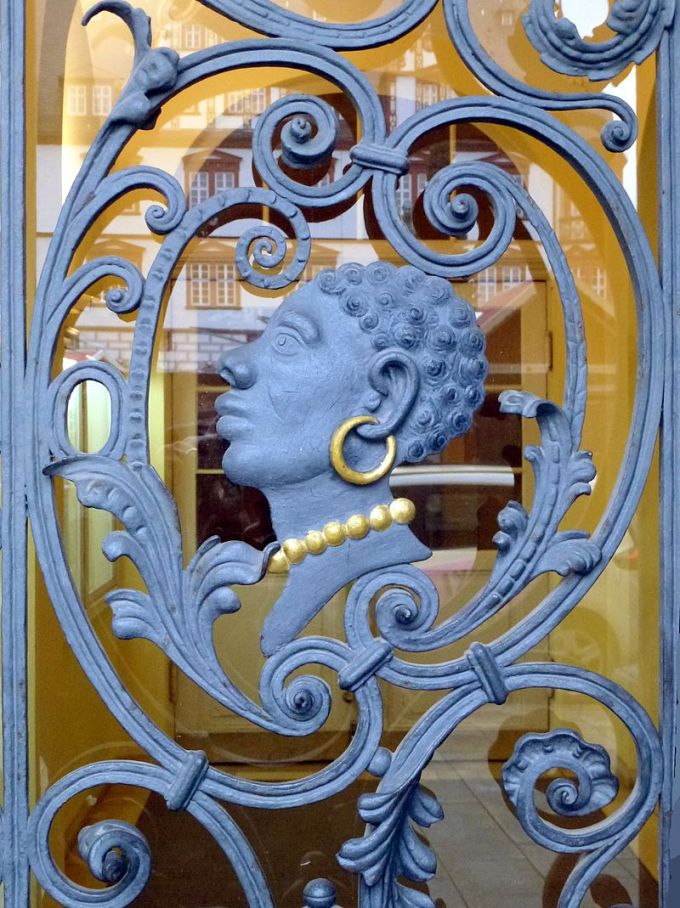
Jewelry, especially a golden earring, which conformed to stereotypical depictions of Africans as uncivilized, seems only to have been added in the nineteenth century but continues to feature today. Buonasera, “Coburger Mohr im Ziergitter der Rathaustür” (2014), Wikimedia Commons.
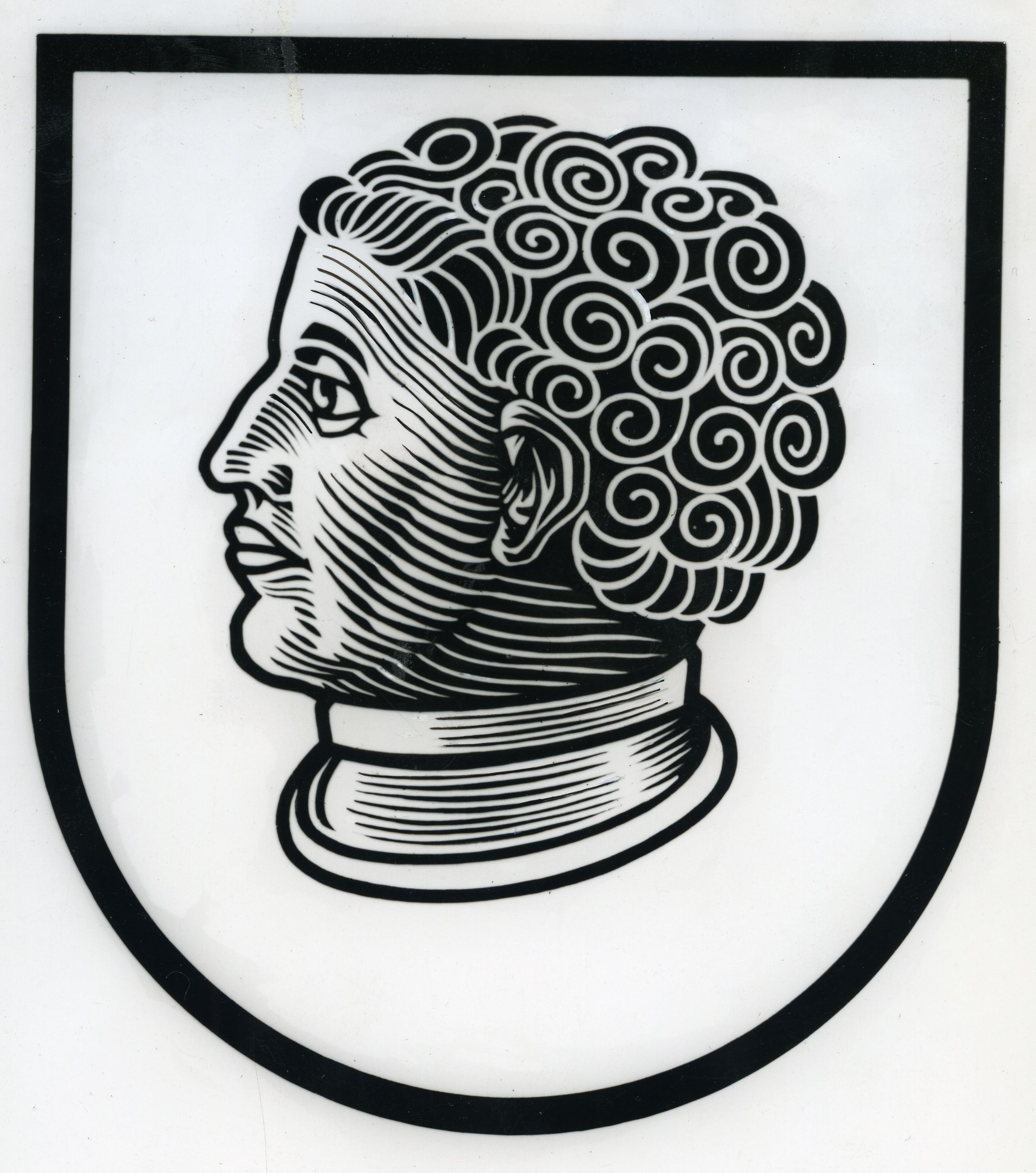
The head was removed from the city crest under the Nazis, who replaced it with a sword and swastika. It was returned again after the war and updated in 1953 with an eye toward a more sympathetic depiction of Maurice. Note the addition of a neck collar, an adornment sometimes worn by Black courtly servants in previous centuries as a nod to slavery. Erich Lage, “Stadtwappen Coburg” (1953), Stadtarchiv Coburg A 18847/1 fol. 22r.
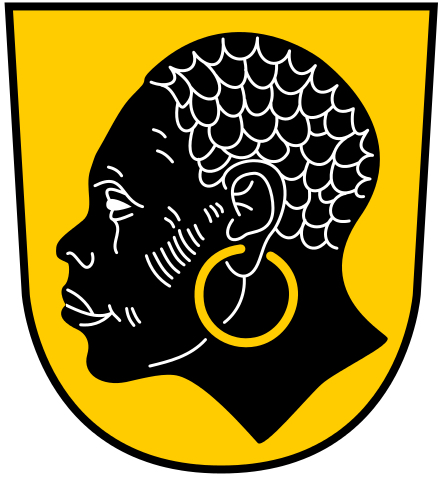
The “Moor’s head” was last updated in 1974 in a return to the design from the pre-Nazi period. “Wappen der Stadt Coburg” (1974), Bayerns Gemeinden.
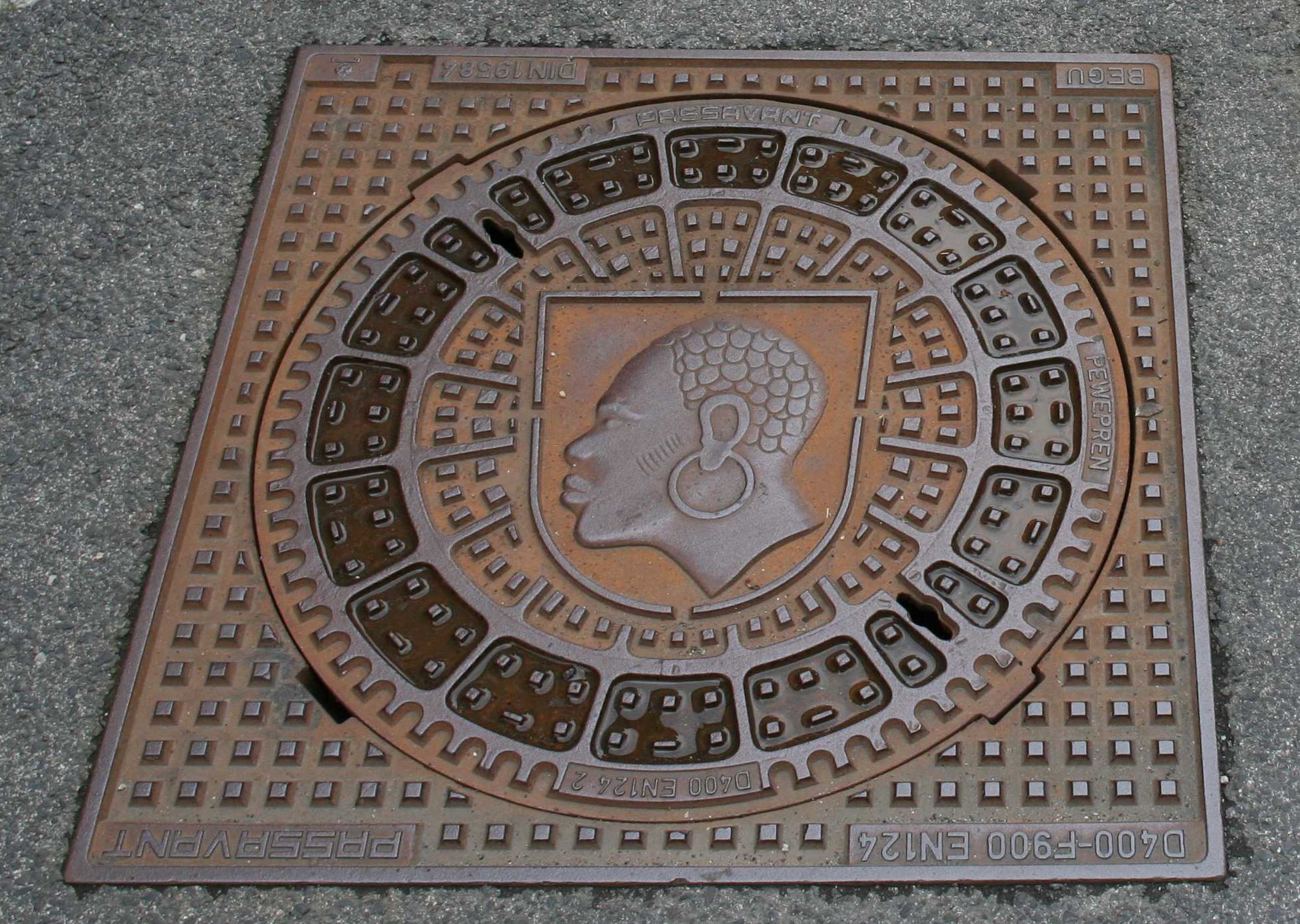
In its current form, the “Coburg Moor” adorns everything from official buildings to manhole covers. Störfix, “Kanaldeckel mit Stadwappen” (2005), Wikimedia Commons.

The “Coburg Moor” (ca. 1380-present) by Jeff Bowersox is licensed under a Creative Commons Attribution-ShareAlike 4.0 International License. Permissions beyond the scope of this license may be available at https://blackcentraleurope.com/who-we-are/.